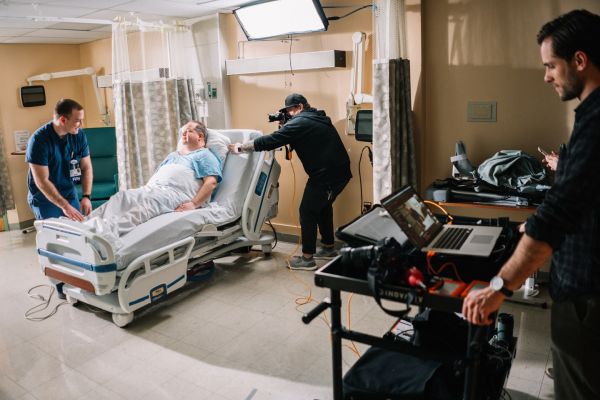
Piggybacking: The New Normal in Commercial Photography

Every January I make a point to sit down and take stock of the previous year’s jobs. Did they go smoothly? Could they have been done better? Any trends worth noting? This year, 'Piggybacking' stands out as an advertising photography trend to take stock of.
What is piggybacking? Our story starts in the 1980s, when ad agencies had money to burn. Then, motion productions and still productions were always separate entities. But today, brands are paying less, so agencies are cutting costs to make their fees go further. Who do you think the buck stops with?
Here’s how an advertising stills job usually works.
First, an art buyer or producer tells you you’ve been put up for a job. So, you and your agent tell your producer, “Hey, we’re in the running for (awesome campaign)!” Next comes the 'triple bid', in which my team goes up against two others. If a million different things go your way and the price is right, the job is yours! Now you hire your team, which can roll 50 deep. Find your locations, talent, catering, rentals, security and sometimes your EMT, in case things get freaky. All told, you spend a cool half-million and your client gets pretty pictures to put up on billboards and the internet. If you did a really good job, maybe you win an industry award and you get to do it again and again.
Changes in the Workflow
Things started changing a few years ago. Now, when the call comes, the creative director says, “we need to match the look, feel and talent we have in the motion shoot so we are going to combine the productions".
I’m no longer rolling 50 deep. I still have a couple of assistants and a digital tech, maybe, but my 50 is now five. I’m shooting on someone else’s set, and lots of people who work for someone else are telling me when and where I can shoot. Instead of having an hour to get the shot, I have five minutes. In short: the buck hit me and my team right in the face. Hard.
The New Normal
I’ve always been adaptable. I came from photojournalism. I’ve had to finish shoots in five minutes for years. I can be nimble. The question now becomes, what do I need to make this work?
The 3 Big Piggybacking Challenges
1. Time. Motion is God on these sets, so my plan is to be organised and ready. Go through every single shot with the producer and the client to find out what they want. Have a very detailed shot list I can check off as we go along. Pre-build any lighting or prop equipment.
2. Light. Because motion shoots at 1/48th of a second - a very slow shutter for stills - they light at an ISO of 800 or higher - which is high for still. The best way to advocate for my lighting needs is to be on the pre-production calls with the motion team and let them know I will need a lot more light than they will and it would be great if it didn't flicker. The second best option is a long call with the AD. Unfortunately, the gaffers and art department are often tearing down the set while I shoot. Bottom line: I have to be self-sufficient and plan other options.
3. Sound. Sometimes I get to shoot while the director is shooting, but if they are running sound then I have to shoot completely silently. I can shoot completely silent on the Sony A7RIII and Sony A9 camera. The only issue with silent mode is banding from existing set lights that aren’t flicker free, but you can sometimes solve that with that conversation you had with the gaffers and AD from motion. I always test my cameras before the talent is on set to make sure everything is working.
The fact is, piggybacking is probably the way of the future for a fair amount of advertising stills. So we adjust. I’d always rather have my own set and people, but I’ve also come to enjoy working on piggyback sets. I’ve met some really great directors and cinematographers and learned a ton about large motion productions. I love what I do - photography is a fantastic life but it's a lot of work and honestly it’s actually a little bit liberating to not be responsible for the entire production. I don’t have to manage clients as much, I don’t have to organise dinners and I don’t have to manage 50 people. In a way, it’s kinda like being an extremely well-paid editorial photographer. In the '80s.
Michael Rubenstein is an advertising and editorial photographer and a Sony Artisan of Imagery













